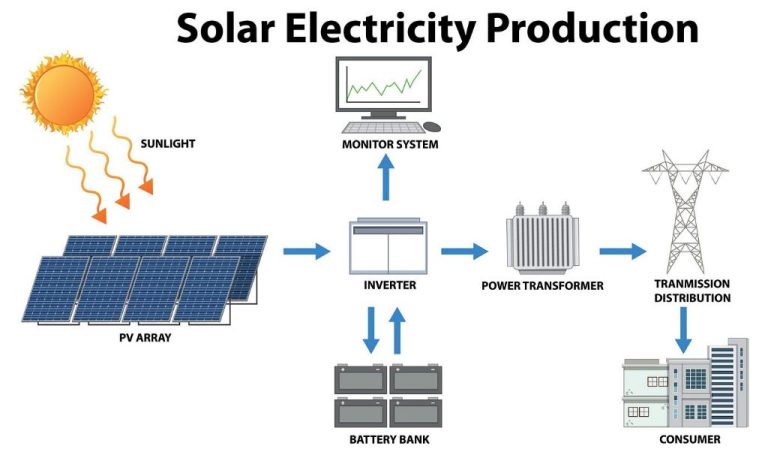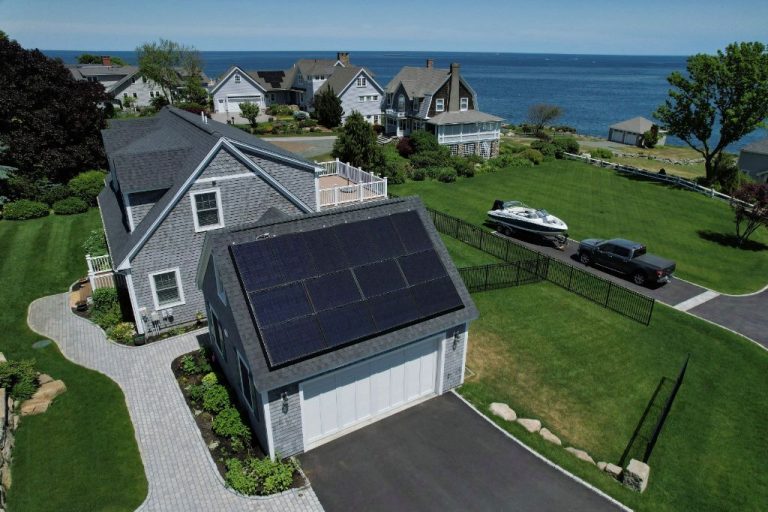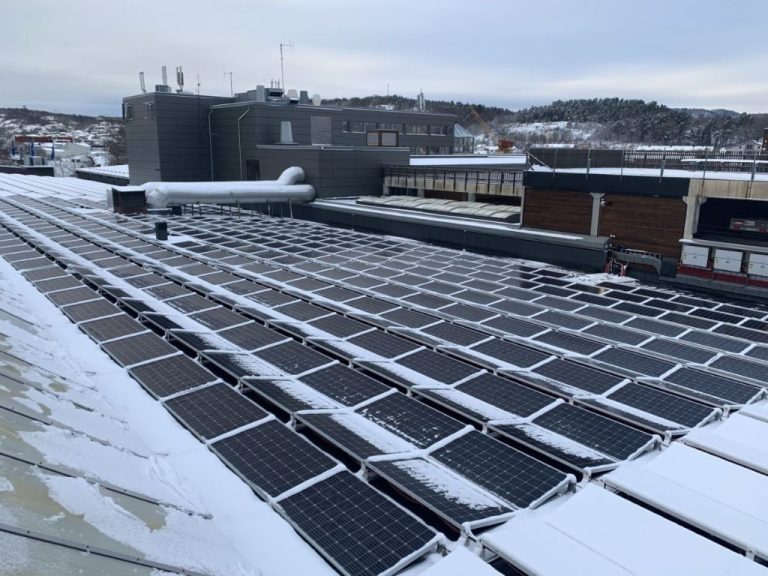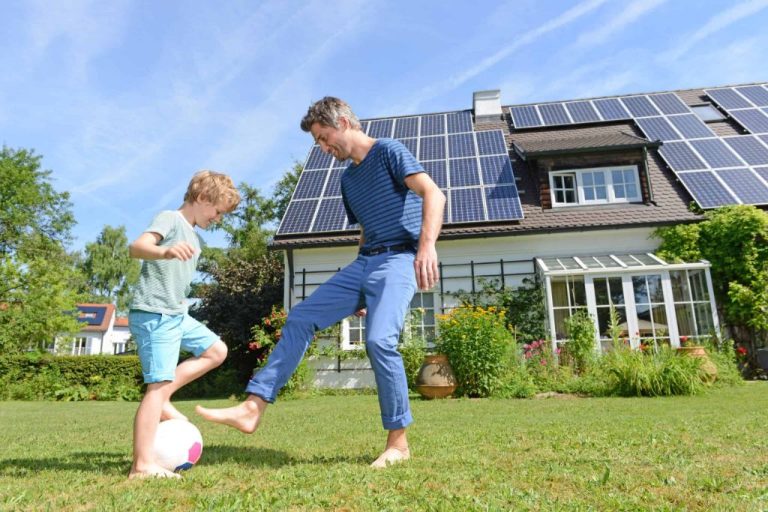Do Solar Panels Transfer Energy?
Solar panels, also known as photovoltaic (PV) panels, are devices that convert sunlight into electricity. They are made up of solar cells, which absorb photons from sunlight and convert them into an electric current using the photovoltaic effect. This direct current (DC) electricity generated can then be used to power homes, businesses, and the grid.
There is often confusion around whether solar panels themselves actually transfer energy directly to homes and buildings. The question arises because solar panels produce DC power, whereas homes and buildings run on alternating current (AC) power. So do solar panels transfer energy directly, or is additional technology required to convert the electricity into a usable form?
How Solar Panels Convert Sunlight to Electricity
Solar panels utilize the photovoltaic effect to convert sunlight directly into electricity. When photons from sunlight hit the solar cell, they transfer their energy to the semiconductor material, causing electrons to break free from their atoms. The solar cell contains an electric field that forces these free electrons to flow in one direction, creating a DC current.
Solar cells are made from semiconductors such as silicon, which is doped to form a p-n junction. When sunlight hits the solar cell, the photons stimulate electrons in the n-type silicon to flow to the p-type silicon. Metal conductive plates on the sides of the solar cell collect these electrons and transfer them to wires as electricity.
Solar cells are wired together in modules to produce higher voltages, and modules can be linked together to form solar panel arrays. The photovoltaic effect allows solar panels to absorb sunlight and convert it directly into usable electricity without any moving parts.
Direct Current vs Alternating Current
Direct current (DC) flows in one direction only. The electricity generated from solar panels is direct current. Alternating current (AC) flows back and forth in both directions. Most household appliances run on AC power.
Solar panels produce DC power which flows in a constant direction into an inverter. The inverter then converts the DC into AC power that can be used to run household appliances and lighting. This conversion happens because appliances are designed to run on AC power from the electric grid.
Solar panels produce DC because of how they are constructed. Solar cells inside the panels have a positive and negative layer. When sunlight hits the cells, the electromagnetic radiation knocks electrons free in the negative layer. The internal electric field of the solar cell pushes these electrons in one direction, creating DC current.
Inverters Convert DC to AC
Solar panels generate direct current (DC) electricity when sunlight hits the panels. However, the electricity used in homes and on the grid is alternating current (AC). In order to connect solar panels to the electrical grid and power homes, the DC electricity must be converted to AC electricity.
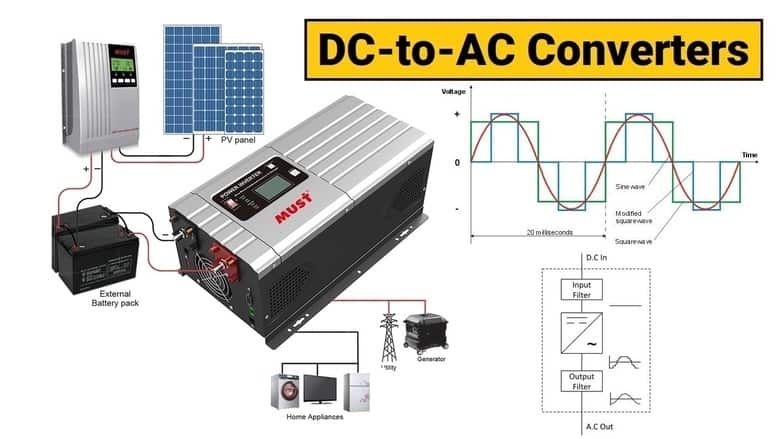
This is where inverters come in. Inverters are electrical devices that convert the DC output from solar panels into usable AC electricity. The inverter takes the DC input and uses switching devices to create an AC output waveform at the desired voltage and frequency (60 Hz in North America).
Inverters play a crucial role in the operation of solar panel systems. Without an inverter, the DC electricity from the solar panels would not be compatible with standard AC devices and could not be fed into the electrical grid. The conversion from DC to AC allows solar panel systems to provide usable renewable electricity to homes and businesses.
Transferring Energy to the Grid
When solar panels generate electricity, the DC power flows from the panels to an inverter, which converts it to AC power. This AC electricity then flows through the home’s electrical panel to power any appliances or lights that are in use. Any excess electricity gets fed back into the utility grid.
This process is enabled by net metering policies. With net metering, a customer’s electric meter can essentially spin backwards when their solar panels produce more electricity than the home is consuming. This excess electricity gets exported to the grid, and the customer earns credits for those kilowatt hours. At night or on cloudy days, they can then use those credits by pulling electricity back from the grid.
Net metering allows solar customers to maximize the value of their solar energy system. Without net metering, any excess electricity generated would just go to waste. But with net metering, customers get full retail credit for the extra solar power they provide to the grid. This helps offset the cost of electricity drawn from the grid when their solar panels aren’t actively producing power.
Energy Storage
To use solar power even when the sun isn’t shining, many homeowners opt to pair their solar panel system with a battery storage solution. This allows excess solar energy that is generated during the day to be stored in batteries for use at night or during power outages. Lithium-ion batteries have become a popular choice for home solar battery storage thanks to their high efficiency and energy density. These sleek, compact batteries can store several hours worth of a home’s energy demand.
Battery storage systems are sized according to the home’s electricity usage and desired backup capability. For example, Tesla’s Powerwall can store 13.5 kWh of energy, enough to power small home appliances and lights for an evening. Higher capacity options like the Powerwall+ offer up to 27 kWh of storage. When integrated with solar panels, the batteries automatically charge during the day, seamlessly switching to battery power in the evening so the home can run on its own stored solar electricity overnight.
Solar battery storage provides homeowners with energy security and independence, allowing them to keep essential lights and appliances running even during blackouts. The stored solar energy can also be used to reduce electricity costs by optimizing when power is drawn from the grid versus from the solar storage system. As battery technology continues improving and costs keep coming down, solar energy storage is becoming more affordable and popular.
Solar Panels Don’t Actually Transfer Energy
One common misconception about solar panels is that they directly transfer energy. However, solar panels do not actually transfer energy themselves – rather, they convert sunlight into electricity. The photovoltaic cells within solar panels absorb photons from sunlight, which excites the electrons in the silicon. This generates an electric current, called direct current or DC. The inverter then converts the DC electricity into alternating current or AC electricity, which can then be used to power homes and businesses or fed back into the grid.
So in summary, solar panels convert the sun’s radiant energy into electrical energy through the photovoltaic effect. The electrical energy is then either used immediately or stored in batteries for later use. Strictly speaking, solar panels themselves do not transfer energy – they produce electricity via sunlight exposure, while transfer happens via wires, cables, and the electrical grid. Understanding this distinction helps clarify how solar power actually works.
Benefits of Rooftop Solar
Some of the key benefits of installing solar panels on your roof include:
Clean Renewable Energy
Solar energy is a clean, renewable source of electricity that does not create any emissions or pollution. Unlike fossil fuel power plants, solar panels generate electricity without releasing greenhouse gases that contribute to climate change.
Energy Bill Savings
Putting solar panels on your roof allows you to generate your own electricity during the day when the sun is shining. This solar electricity that your panels produce can directly power the appliances and devices in your home, reducing the amount of electricity you need to pull from the grid. With less electricity purchased from your utility company each month, you can see significant savings on your energy bills.
Lower Grid Demand
In addition to the household energy bill savings, widespread adoption of rooftop solar also benefits the overall electric grid. When loads of homes have their own solar panels generating electricity, that takes pressure off the traditional grid infrastructure and reduces electricity demand spikes during peak hours.
Challenges and Limitations
While solar panels provide many benefits, they also come with some challenges and limitations to be aware of:
Intermittent Energy Source
The amount of sunlight that hits solar panels varies throughout the day and year. Solar panels do not generate any electricity at night or on cloudy days, which can make them an unreliable energy source. This intermittency requires storage solutions or a connection to the grid.
Higher Upfront Costs
Purchasing and installing a solar panel system requires a significant upfront investment. However, solar panels have no fuel costs and very low maintenance costs. The payback period averages 4-8 years.
Limited Generation Capacity
The amount of electricity generated by solar panels is limited by available roof space. Solar panels for an average home may only generate 20-30% of energy needs. High electricity users or large facilities may need to supplement with other sources.
Conclusion
In summary, solar panels are an important technology for generating renewable electricity from sunlight. They work by absorbing photons from sunlight and converting that light energy into electricity through the photovoltaic effect. The key takeaway is that solar panels themselves do not actually transfer energy anywhere – rather, they convert sunlight into direct current electricity which can then be used onsite, stored in batteries, or inverted into alternating current and fed into the grid.
We’ve covered how solar cells work to absorb sunlight and release electrons, creating an electrical current. This DC electricity flows into an inverter which converts it into AC power that can be used to run household appliances and electronics. Any excess electricity can be fed back into the grid. Solar energy can be stored in batteries for use at night or during power outages. While solar power has many benefits, it also faces challenges like intermittency and high upfront costs.
In conclusion, solar panels are an essential clean energy technology, converting the sun’s abundant energy into carbon-free electricity. Though they do not themselves transmit energy, they enable the capture and conversion of solar energy for useful electrical power.

